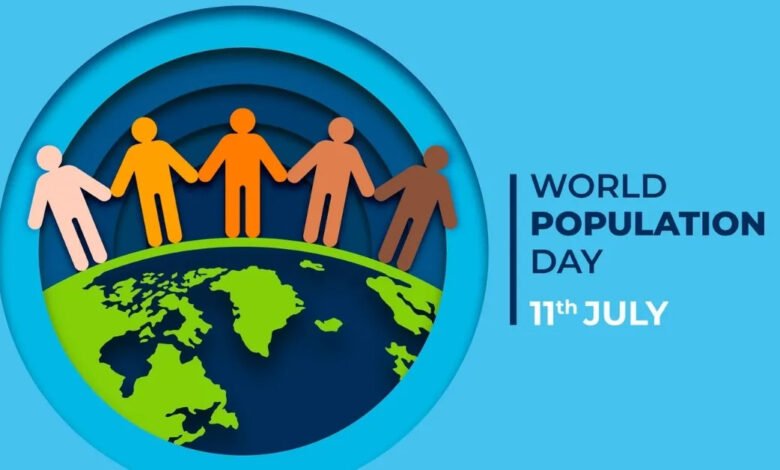World Population Day: Building a Safe World for Every Child

Every year on July 11, the world observes World Population Day to raise awareness of the challenges associated with population growth. Established by the United Nations in 1989, this observance encourages global action on critical issues that shape the well-being of children, including access to education, healthcare, safe living environments, and proper nutrition.
Rapid population growth can strain resources and services essential to children’s development. It highlights the need for sustainable urban planning, equitable distribution of resources, and strong policies that prioritize the rights and needs of the youngest and most vulnerable members of society.
Theme of World Population Day 2025
The theme of World Population Day 2025, “Empowering young people to create the families they want in a fair and hopeful world,” highlights the importance of giving children and youth equal access to healthcare, education, and information. This enables them to make informed decisions about their futures, including family planning.
A sustainable and inclusive future depends on everyone’s commitment to safety and dignity in life choices, especially those of young people, whose voices are often unheard.
Origin of World Population Day
World Population Day was established in response to a milestone reached on July 11, 1987, when the world population hit five billion.
The idea came from Dr. K.C. Zachariah, a senior demographer at the World Bank, who recognized the need to raise global awareness about population-related challenges.
Since then, the day has served as a reminder of both the opportunities and the difficulties that come with population growth and the need for sustainable solutions.
Significance of World Population Day
Today is significant because children are at the heart of population issues. As populations increase, children often face strained access to education, healthcare, and basic needs, especially in low-income and high-growth regions.
They are also the most vulnerable in times of crisis, such as environmental disasters or economic instability.
As of 2025, the global population has surpassed 8.2 billion. World Population Day serves as a reminder of our shared responsibility to ensure that every child grows up in a world where basic needs such as clean air, safe water, education, and healthcare are not luxuries, but rights.
This day calls for meaningful policy change that places children’s well-being at the heart of global planning. It highlights the importance of gender equality, access to family planning, and social support systems that help children thrive.
World Population Day isn’t just about statistics. It’s about safeguarding children’s dreams, safety, and future. The choices we make today will shape the kind of world they inherit.
Sustainability and Population: An Increasing Challenge
The world population exceeded 8.1 billion in 2024, and projections suggest it could approach 10 billion by 2050. This rapid growth brings both opportunities and significant challenges, especially when it comes to securing a healthy and safe future for children.
As population numbers rise, the pressure on essential services like education, healthcare, clean water, and food becomes more intense. For children, this can mean overcrowded classrooms, limited access to medical care, unsafe living conditions, and inadequate nutrition.
While population growth can stimulate economies, it also risks widening inequality and straining systems that children depend on. Without targeted investment and inclusive policies, millions of children could be left behind, denied the opportunities they need to grow and learn.
Prioritizing Gender Equality and Reproductive Health
A key goal of World Population Day is to promote reproductive health and rights, critical foundations for protecting and improving the lives of children around the world.
Thanks to the efforts of organizations like the United Nations Population Fund (UNFPA), maternal mortality has dropped by 40% since 1990. This progress means more children are born safely, and more mothers can raise them in healthy, stable environments.
Efforts to advance gender equality have also made a significant impact on children’s lives. In countries like Ethiopia, Nepal, and India, awareness campaigns inspired by World Population Day have helped reduce child marriage and female genital mutilation practices that rob girls of their health, education, and childhood. These changes protect not just girls’ rights but their entire futures.
When we empower women and girls with access to education, healthcare, and choices, it benefits their children and their communities.
Future Demographics, Data, and the Role of Youth
Young people, about 1.2 billion globally, shape the future of our planet. World Population Day encourages them to learn about social justice, reproductive health, and environmental responsibility. This includes adolescents, who deserve to grow up in a world that protects their rights and invests in their well-being.
Accurate demographic data, such as census information, plays a critical role in building child-friendly cities, designing youth-focused education systems, and ensuring fair opportunities in housing, employment, and urban development.
Conclusion
World Population Day reminds us that population challenges affect the lives of millions of children, shaping their access to food, education, healthcare, and safety.
Governments, communities, and individuals must put children at the heart of our efforts by investing in gender equality, strengthening healthcare systems, and ensuring quality education for every child.
World Population Day challenges us to build a world where every child has the opportunity to grow, learn, and thrive.





